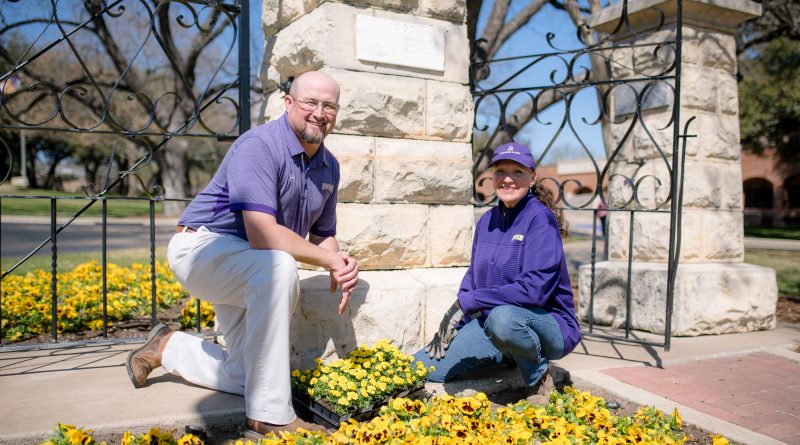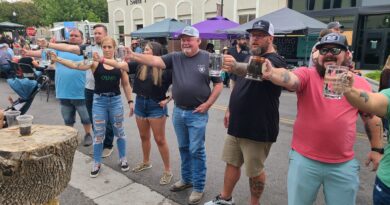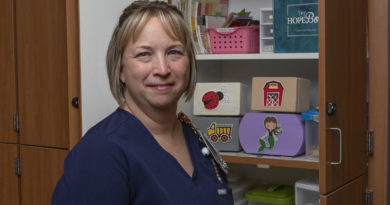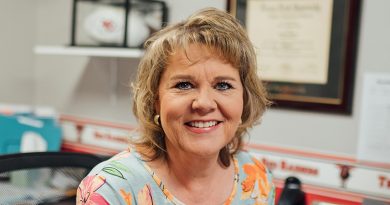UMHB’s spectacular landscaping adds to its ‘curb appeal’
By Paula Tanner | Photography by Justin Borja
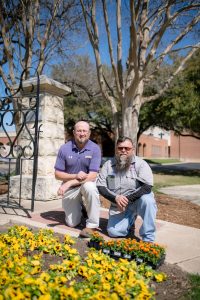
Any homeowner knows the importance of curb appeal. Yes, it takes extra work to keep that yard neatly trimmed and those flower beds and containers blooming all year long, but it all communicates to your visitors a sense of order and beauty that makes them glad to be there.
Now imagine how your investment of time and money for curb appeal would be multiplied if your home consisted of 76 buildings located on 297 acres, 106 acres of which are maintained regularly. That is the challenge faced by the University of Mary Hardin-Baylor, which is home to thousands of students during their years of collegiate study in Belton.
The curb appeal of the campus makes an important first impression when visitors come to UMHB. “Before prospective students and their parents ever walk into a building or talk to a single person here, they see our buildings and grounds,” says Sean Eulenfeld, UMHB’s manager of landscape services. “We want this to be a welcoming environment, so we make sure they will see beautiful lawns and blooming flowers as soon as they enter the campus.”
The way the campus looks also makes a big difference for the students who already live and study there. “Students are under a lot of stress during their college years,” says Marv Ee, vice president for campus planning and support services. “We know they perform better in a peaceful environment, so we place benches and swings outdoors across the campus, to give students places to escape the stress of their studies. We want our campus to be a place where they can feel safe and be reminded of the beauty of God’s creation; our landscaping helps convey this to them.”
So how do you keep 106 acres looking trim and attractive? UMHB takes a “divide and conquer” approach, splitting the duties between an in-house team of gardeners and a commercial lawn care service.
The university employs nine in-house groundskeepers to till empty beds, plant flowers, shrubs, and trees, and do the fertilizing, watering, mulching, and pruning it takes to keep the plants in shape. Three of those groundskeepers focus just on the university’s athletic fields. “They make sure that everything is kept up to NCAA code,” Ee says. “They make certain the practice fields are safe and that the competition fields are pristine.”
The other six groundskeepers maintain 284 different flower beds on campus, which change with the seasons. “We change all of our flower beds at least twice a year,” Eulenfeld says. “When we change out all of the flower beds at once, it takes 50,000 plants to fill them.
“In the more prominent locations, we may replace the flowers four or more times a year. In those places, the flowers are changed seasonally and for special events such as graduations. We think about where people will be going to take photos, like the big UMHB letters at the entrance to Vann Circle. We want to make certain those areas always look good,” Eulenfeld says. “And it’s not just for our students; people from the surrounding communities also come here regularly to have their portraits made in our Millennium Oaks Park.”
Trees are another important aspect of the landscape. The big live oaks and pecans provide welcome shade in the summertime, but it can be difficult to grow grass underneath them. To keep them looking their best, groundskeepers bring in pine straw regularly to blanket the ground around the trunks of nearly 1,300 trees across the campus.
New trees are also planted regularly. When a mature tree is cut down to make way for construction, the City of Belton requires the property owner to offset the loss by planting several young trees in its place. As a result, UMHB plants new trees almost every year. “We have to be very particular about where a new tree is put in, to make sure that the irrigation is set up correctly,” Eulenfeld says. “When we’re all gone, these trees are still going to be here, so we want to do the best that we can.”
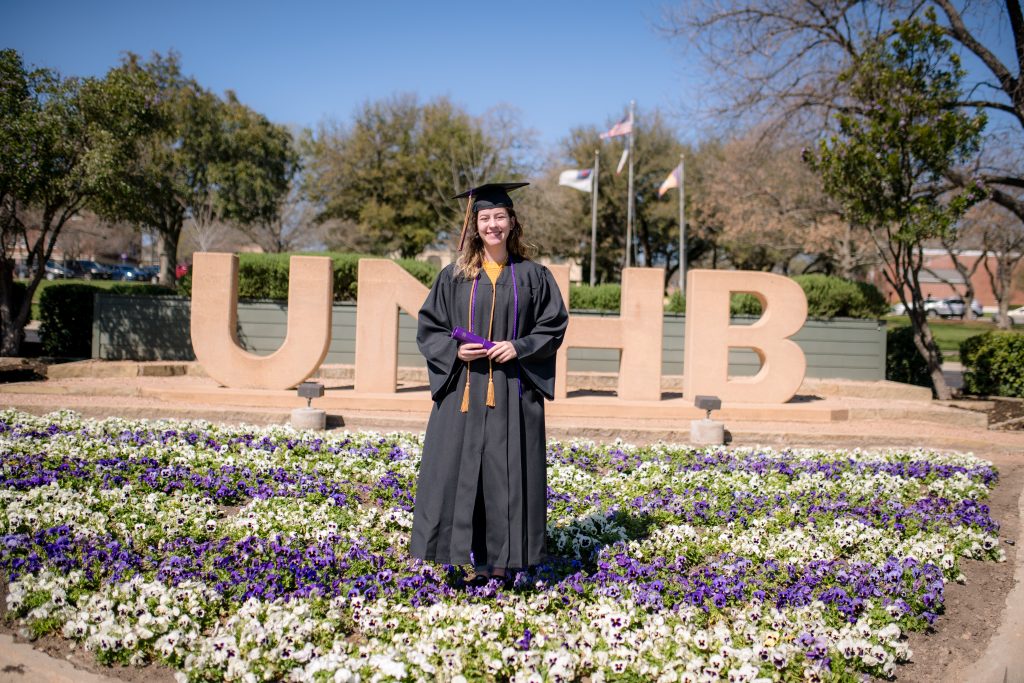
And then there are the lawns.
“UMHB is one of the few places in Central Texas where you will find green grass in the winter,” Ee says. “We over seed with ryegrass each fall to fill in areas that are patchy and keep the campus looking green all year long.”
Year-round green means year-round lawn care. UMHB contracts out the job to Heart of Texas Landscape and Irrigation of Belton. Each week HOT sends a team to the campus for a day of mowing, trimming, and blowing curb lines and sidewalks free of clippings.
“We have a unique relationship with Heart of Texas,” Ee says. “They have been our contractor since 2008, and through the years it has become more like a partnership. They understand our desire to keep everything pristine, and we really appreciate them.”
Heart of Texas Landscape was founded by Doug and Carol Rowald in 1989, and today their son Ben Pamplin serves as president of the company. Though none of the Rowalds are UMHB alumni, they have become enthusiastic members of the UMHB family, attending athletic events and providing generous support for scholarships and building projects. In 2013, Doug and Carol Rowald were named Honorary Alumni of UMHB in appreciation of their loyalty and service to the university.
Between the professional lawn care team from HOT and the university’s in-house groundskeepers, UMHB invests a lot into keeping its campus beautiful. The results speak for themselves.
“When we ask students what led them to enroll at UMHB, they frequently mention the beautiful campus,” says Dr. Steve Theodore, senior vice president for administration and chief operating officer. “I’ve had many students tell me, ‘As soon as I set foot on the campus, I knew this was the place I wanted to be.’”
Paula Tanner is vice president of communications and special projects at the University of Mary Hardin-Baylor.

